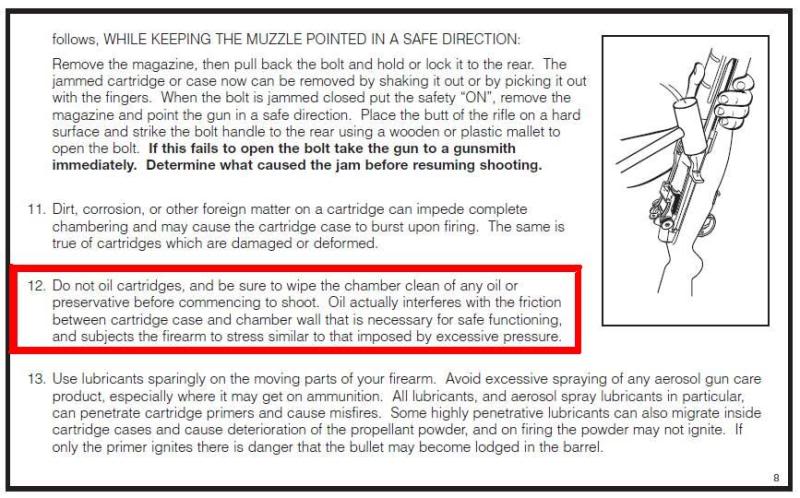After chamber pressure becomes sufficient to initiate case wall stretching, the case head soon hits the bolt. As pressure progressively increases, it pushes the case head progressively harder against the bolt. Hence, the bolt will progressively compress and the action will progressively stretch until chamber pressure peaks. (Actually, owing to inertia, the case head will continue to push against the bolt, as the bolt continues to retreat, for some time after chamber pressure has peaked.)
Eventually, the bolt will exert more force against the case head than chamber pressure exerts against the case head. At that instant, the bolt will begin to slow, eventually to stop, and then to reverse direction. As chamber pressure continues to plummet, the energy stored in the bolt and receiver will drive the bolt back toward the resting position. In practice, the bolt will hammer the case into the chamber with considerable force; often sufficient to set the case shoulder back enough to assure that case headspace length is shorter than chamber headspace length. As a result, the action will open freely.
While all of this is happening, the chamber also is stretching in both length and diameter. This contributes some to case stretching; it also supplies the energy that allows the chamber to hammer back against the case body, so that it is reduced in diameter enough to assure free extraction.
Depending upon case shape (body taper, shoulder width, shoulder angle), case construction (hardness, thickness, etc.), load variables (pressure peak and duration), action design and barrel design (over the chamber), many results are possible. First, the action can open freely and the case can extract freely. Second, the bolt can turn freely (because case headspace is shorter than chamber headspace) but the case can hang up in the chamber (because relaxed case body diameter is slightly larger than relaxed chamber diameter (the case is an interference fit). Third, the bolt can turn hard (because case headspace length is longer than chamber headspace length) but the case can extract easily (because case body diameter is smaller than chamber diameter).
This partly explains why various chamber and gun designs show different symptoms with loads at similar peak pressure. The classic comparison is the 22-250 versus the 22-250 Ackley Improved (AI). With the former, this rebounding bolt can easily drive the case into the chamber far enough to move the shoulder and solidly wedge the case; with the latter, the shoulder is many times more resistant to being moved and driving the case into the chamber the same distance accounts for many times less increase in case diameter at any given location. Hence, pressure that causes sticky extraction with the 22-250 will show perfectly free extraction in the AI version.
THE GUN
How much the case head moves the bolt face rearward depends upon the following factors:
Shape of pressure curve — a wider curve means more movement (owing to inertia, the case head never has time to move as far as it would if the same peak pressure were applied in a static situation. Therefore, the longer the pressure stays close to the peak, the more the bolt will compress — the farther the head will move);
Peak chamber pressure — force and movement are directly proportional;
Distance between bolt face and locking surface — distance and movement are directly proportional;
Cross-sectional area of bolt — area and movement are inversely proportional; and,
Cross-sectional area of receiver — area and movement are inversely proportional.


















 Register To Reply
Register To Reply





 AKA No.3 Enfield
AKA No.3 Enfield 

